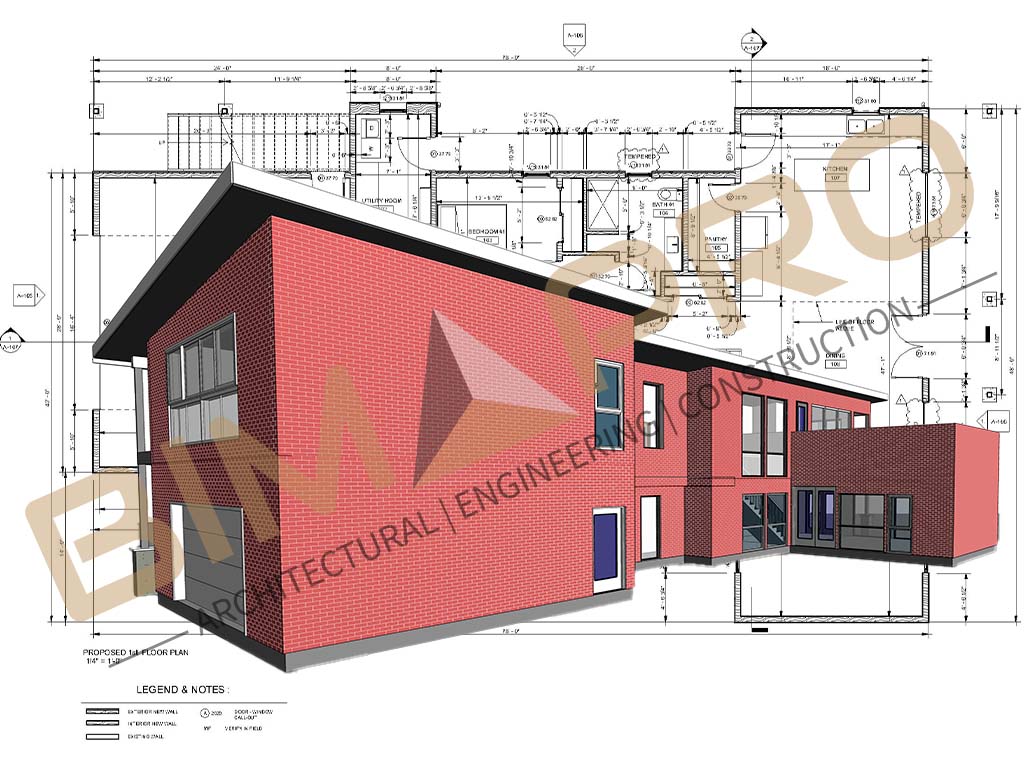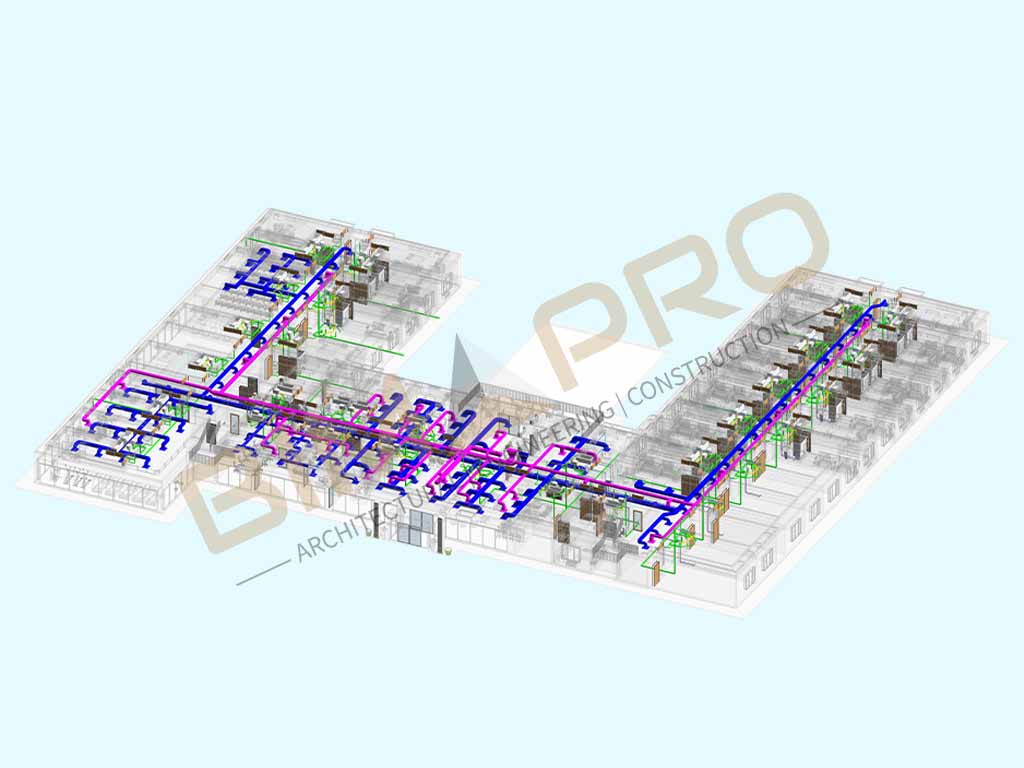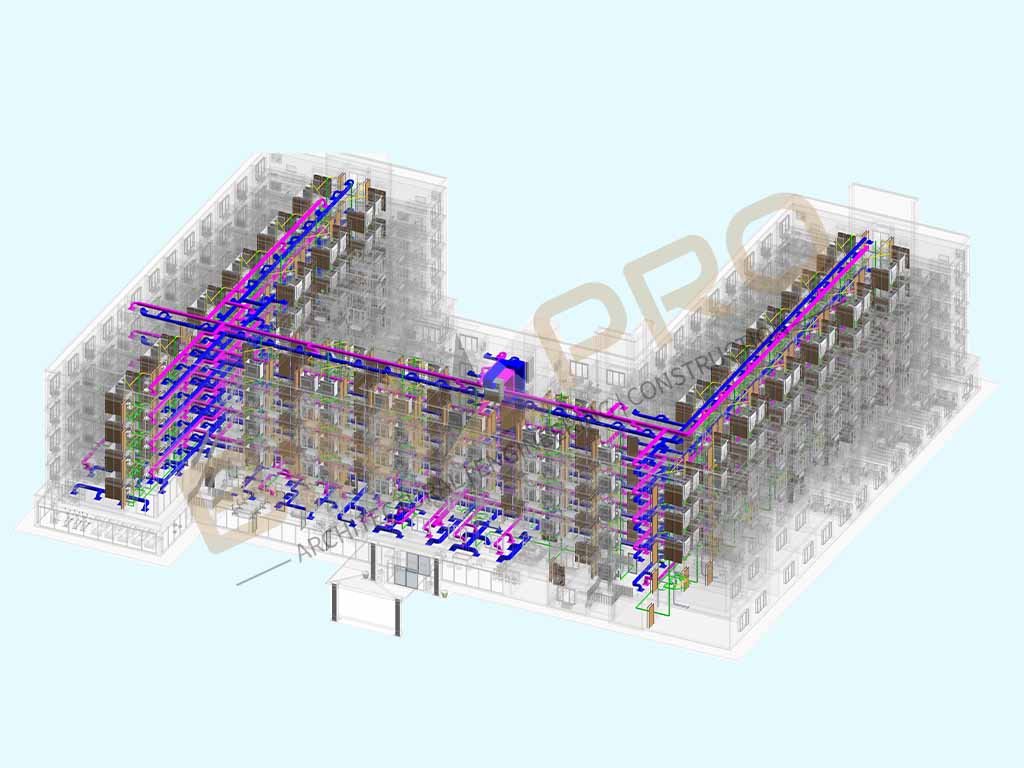A Comprehensive Guide to Create Revit Families

A Comprehensive Guide to Revit Family Creation is the perfect go-to for anyone looking to get comfortable with making custom families in Revit. Creating Revit Families is a crucial skill for anyone involved in Building Information Modeling (BIM), as it lays the foundation for accurate and efficient project workflows. At its core, a Revit Family is more than just a visual representation of an object—it’s a data-rich element designed to be adaptable and reusable across projects. Whether it’s a door, window, furniture piece, or custom element, each family is crafted using a combination of geometry, parameters, and embedded information to meet specific design needs. By mastering Revit Family creation services, designers can enhance project consistency, streamline collaboration, and unlock new levels of design precision. For those looking to maximize efficiency, outsourcing family creation to experts ensures access to high-quality, standardized components while saving time and costs.
What Are Revit Families?
Revit Families are an integral part of Autodesk Revit, a software used for BIM modeling services. To understand Revit Families, imagine them as digital representations of real-world building components—like windows, doors, furniture, beams, or even plumbing fixtures. They are essentially templates for creating BIM objects that will appear in a Revit model. These objects are not just shapes; they contain crucial data about the objects they represent, such as dimensions, materials, and functional properties, making them a key component in creating an accurate and detailed digital model of a building.
Types of Revit Families
Each Revit Family consists of various “types,” which are different variations of the same basic object. For example, a “window family” might include types for a 3-foot by 5-foot window, a 4-foot by 6-foot window, and so on. These types allow designers to create multiple variations of the same object without needing to start from scratch each time. This level of customization ensures that the model is tailored to the specific design needs of a project.
There are three main types of Revit Families: System Families, Loadable Families, and In-Place Families. Each serves a different purpose within the Revit environment.
1. System Families
These families are predefined within the Revit software and cannot be created or modified in the same way as other families. System Families include basic architectural, structural, and MEP elements like: Walls, Floors, Roofs, Ceilings, Columns, Foundation elements, etc.
These families are essential building blocks that form the structure of the model. They are typically modified using Revit’s built-in tools (like the Wall tool or Floor tool) but cannot be saved separately or loaded into other projects like Loadable Families.
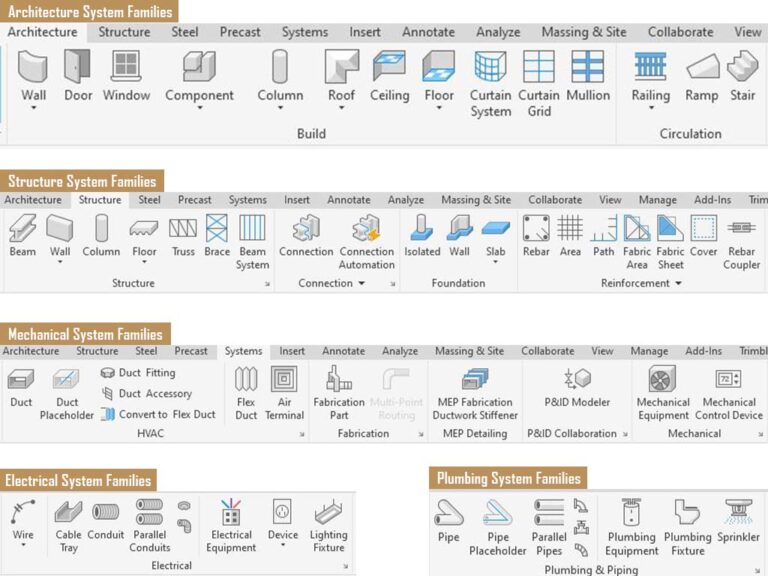
2. Loadable Families
Loadable Families are custom objects that users can create and load into any Revit project. These families are highly versatile and include things like: Doors, Windows, Furniture (chairs, tables), Fixtures (lighting, plumbing), Equipment (HVAC units, appliances).
The beauty of Loadable Families is their reusability—once created, you can save them in a library and use them across multiple projects, ensuring consistency and reducing repetitive work. These families are created from scratch or by modifying existing templates.

3. In-Place Families
In-Place Families are unique to a specific project. These are created when you need a custom element that doesn’t fit into the typical category of a Loadable Family. They are designed directly within the project and cannot be reused across other projects unless they are manually recreated. These families are often used for highly specialized, one-off components, like: Custom sculptures, Special structural elements, Complex and unique building features.
In-Place Families are flexible and can be modified directly within the project, but their lack of reusability makes them less efficient for large-scale BIM operations.
LOD and Its Impact on Revit Family Creation
The LOD directly affects the creation of Revit families, as it determines the amount of detail a family should contain and how it will be used in the broader BIM model. Here’s a breakdown of how LOD influences family creation in Revit:
1. LOD 100: Basic Conceptual Families
At LOD 100, Revit families are created for the purpose of demonstrating the concept or massing of the design. The family models in this stage have minimal geometry and are typically represented as simple placeholders or volumes. The primary goal is to provide an overview of the building’s form and function rather than precise specifications.
- Usage: LOD 100 families are useful in early design stages where the primary focus is on massing studies and spatial relationships.
- Impact on Family Creation: Families created at this level are not intended for detailed analysis. The geometry is typically low, often represented by basic shapes like boxes, spheres, or simple extrusions.
2. LOD 200: Generic Geometry and Systems Families
At LOD 200, families start to take on more geometric detail. Revit families at this level contain approximate dimensions and may include some additional attributes that help define the size, shape, and location of objects within the model.
- Usage: LOD 200 families are useful for schematic design, where the project begins to define key elements more precisely, but without full detailing.
- Impact on Family Creation: Families at this stage include more refined geometry and may also include rough system connections and placeholders for MEP (Mechanical, Electrical, and Plumbing) systems.
3. LOD 300: Detailed and Accurate Families
LOD 300 is where Revit families become fully detailed with accurate geometry and embedded data. Families at this level are typically used for coordination and design development. At this stage, the Revit families contain more complex geometry, material specifications, and dimensions that align closely with the design intent.
- Usage: LOD 300 families are used for detailed design work, ensuring that all stakeholders can visualize and coordinate with a high level of precision.
- Impact on Family Creation: These families are created with detailed dimensions, materials, and attributes that can be used for construction documentation. They include elements such as door hardware, fixtures, and structural connections.
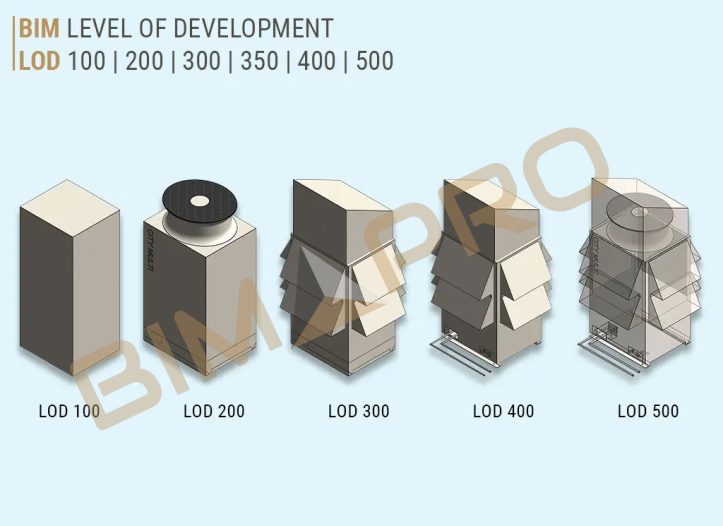
4. LOD 400: Fabrication-Ready Families
When a Revit family reaches LOD 400, it is fully detailed and ready for fabrication. These families contain all the necessary information for actual construction, including accurate geometry, material specifications, and installation details. This is the most detailed level before the final as-built model.
- Usage: LOD 400 families are used in the construction phase, where all elements are fully defined and ready for manufacturing or assembly.
- Impact on Family Creation: At this level, Revit families contain specific fabrication information, such as detailed part numbers, vendor data, and installation instructions. These families are designed with high precision to ensure that the construction team can use them directly for building.
5. LOD 500: As-Built Families
LOD 500 represents the final, as-built condition of the project. The Revit families at this level are used to document the final construction details after the building has been completed. They reflect the actual materials, dimensions, and components used in the building, and serve as a record for maintenance and operations.
- Usage: LOD 500 families are used for facility management, operations, and future renovations. They provide a precise representation of the completed structure.
- Impact on Family Creation: Families at LOD 500 are created with extreme accuracy, reflecting the true dimensions and conditions of the as-built elements, including changes made during construction that may not have been present in earlier models.
Read more in detail about BIM LOD (Level of Development) – LOD100 | 200 | 300 | 350 | 400 | 500
How Do Revit Families Work?
Revit Families are not just visual representations of objects—they contain embedded data that defines their properties, behavior, and relationships with other elements in the model. There is a stramline process to create Revit family. First, you create the geometry, which defines the shape and size of the object in 2D and 3D space. This could be a simple shape, like a rectangular door, or a more complex shape, like a custom light fixture. Once the geometry is defined, you assign parameters to control the object’s behavior. Parameters are like instructions that define how the object should respond to changes. For instance, a door might have parameters to control its width, height, material, or swing direction. These parameters make the family flexible and adaptable to changes in the design.
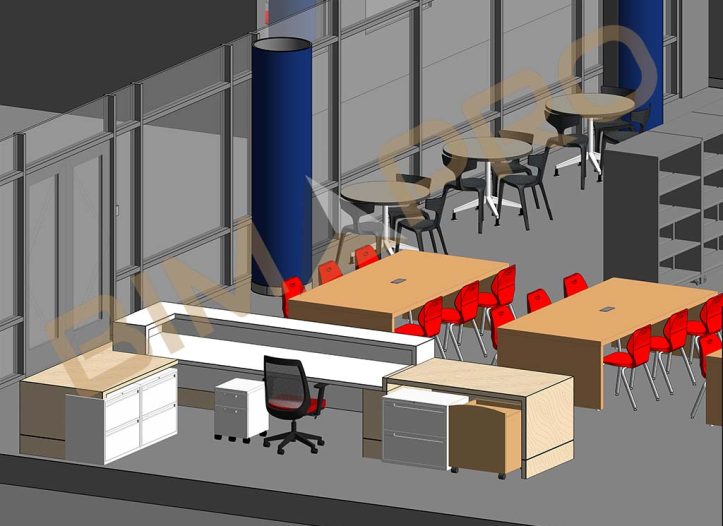
The next step is adding data to the family. This is where the real power of BIM comes in. Revit Families are not just graphical elements—they are full of embedded information. For example, a piece of furniture might have data about its weight, material, manufacturer, and cost. This data can be used for scheduling, cost estimation, and energy analysis, among other things. It ensures that the entire project is well-coordinated, with accurate data flowing seamlessly between design, construction, and operations.
1.Geometry
Geometry refers to the 3D shape of the family. This is the visual part of the family that you can see in the model. For example, the geometry of a door family includes the door’s width, height, and shape. Geometry can be simple (like a rectangular window) or complex (like a custom lighting fixture). The geometry is typically created in Revit’s Family Editor, where you can design the object’s 2D and 3D forms.
2. Parameters
Parameters are the key to Revit’s parametric design, which allows families to adapt based on user input. These are the dimensions or properties that define how an object behaves and responds to changes in the model. For example:
- Dimensional Parameters: Controls the size of the object, such as the width, height, and depth of a window or door.
- Material Parameters: Allows you to assign materials like wood, metal, or glass to your family.
- Visibility Parameters: Controls whether certain elements of the family appear at different view scales or in different views (e.g., a door might have a different appearance in a floor plan versus a 3D view).
- Instance vs. Type Parameters: Instance parameters apply to individual instances of the family (e.g., a single window in the project), while Type parameters apply to all instances of a specific type of family (e.g., a specific style of window).
By using these parameters, families become dynamic. When you change one parameter (like the width of a door), all related aspects of the family (such as its size or material) automatically adjust according to the rules defined in the family.
3. Data (Embedded Information)
Revit Families are rich in data. Along with the geometry, families contain detailed information that is crucial for project coordination. This might include:
- Manufacturer Information: Details about the supplier or manufacturer of a product.
- Cost Data: Information on the cost of the object, which can be used for budget analysis.
- Performance Data: Specifications such as load-bearing capacity for structural elements or energy performance for windows and insulation.
- Scheduling: When a family is placed into the model, Revit can automatically generate schedules to track quantities, dimensions, materials, and other characteristics of the object. This is useful for planning, cost estimation, and logistics.
This data allows teams to work more efficiently, as it automatically populates schedules, helps in procurement, and ensures that the model contains all necessary details for construction.
Explore Project: Revit Family Creation Services for Building Product Manufactures
How to Create Parametric Families in Revit: Step-by-Step
Creating a Revit Family requires knowledge of parametric design and understanding how to structure the family’s geometry, behavior, and data. Parametric design refers to using parameters to control an object’s size, shape, and relationships with other objects. For instance, you might create a table family with parameters for height, width, and leg style, so that if the table’s size changes, the design and proportions automatically adjust.
Once a Revit Family is created, it can be saved in a library for reuse across different projects. This ensures consistency, improves efficiency, and reduces errors in future projects. For example, once you’ve created a custom door family, you can reuse it in multiple building designs, adjusting the sizes or materials as needed, but maintaining the same basic design.
Creating Revit Families is a detailed process that involves several stages. Here’s an overview of how you can create a basic Revit Family:
1. Open the Family Editor
The Family Editor is the environment in Revit where you create and modify families. You can access it by creating a new family file. From there, you can start building your family by defining its geometry and parameters.
2. Create Geometry
Start by creating the 2D and 3D shapes that define your family. This can be done using Revit’s drawing tools like lines, arcs, and extrusion commands. For instance, if you’re creating a door family, you’d start by drawing the door panel’s 2D shape and then extrude it into 3D.
3. Assign Parameters
Next, define the parameters that control your family. This includes setting dimensional parameters (e.g., width, height), material parameters (e.g., wood, glass), and any other properties that will make your family flexible.
4. Add Data
If necessary, you can also embed data into the family, such as manufacturer info, cost, and energy performance. This data is important for project coordination and analysis.
5. Load into Project
Once your family is created, you can save it to a library for reuse. You can then load it into any Revit project. When you place the family into the project, you can adjust the instance or type parameters to customize it for your specific needs.
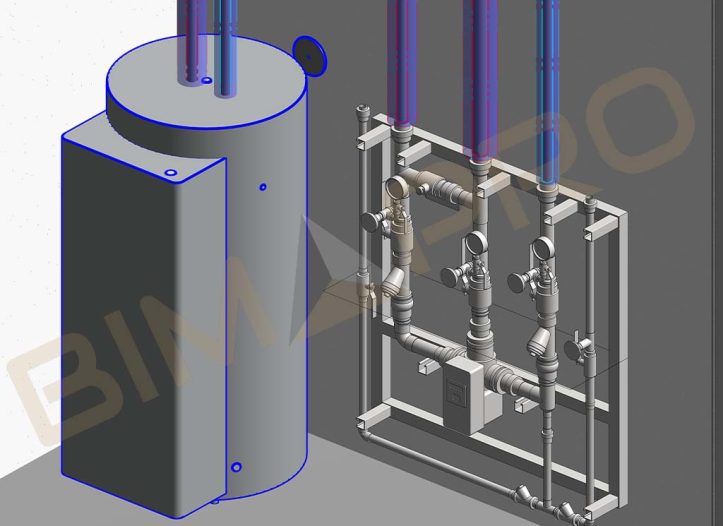
Benefits of Using Revit Families in BIM
One of the biggest benefits of Revit Families is how they support collaboration in a BIM environment. Since Revit is a multi-disciplinary tool, all team members—from architects to structural engineers to MEP specialists—can work with the same families, ensuring that the design is consistent across all disciplines. This reduces errors and miscommunications and helps with coordination, as any changes made to a family (such as changing the material or dimensions of a door) will automatically update in the entire model.
Using Revit Families offers several benefits within the BIM workflow:
1. Consistency: Families ensure that all components in the model are uniform, reducing errors and discrepancies.
2. Efficiency: Once created, families can be reused across multiple projects, saving time and effort.
3. Data Integration: Families contain embedded data that can be used for scheduling, analysis, and cost estimation, making the BIM model a comprehensive source of information.
4. Collaboration: Since families are standardized, all team members—whether architects, engineers, or contractors—can work with the same components, ensuring better coordination and fewer misunderstandings.
How Outsourcing BIM Content Creation Services Can Save Time and Costs
For firms without dedicated BIM teams, outsourcing is a cost-effective solution. BIM Services provider can create high-quality, standardized families that align with your needs, freeing up your team to focus on core design activities. Outsourcing also ensures access to experts who stay updated on the latest trends and standards. Outsourcing BIM content creation Services can be a strategic decision that offers numerous benefits for companies. Here’s how it can save both time and costs:
Outsourcing allows you to tap into a pool of experts who specialize in BIM content creation. They are proficient in creating high-quality models, families, and components according to industry standards. This eliminates the need for training internal staff or hiring specialized talent, saving both time and money.
Outsourcing partners often have dedicated teams working on your projects, leading to faster delivery times. Since they focus on content creation, they can handle large volumes of work simultaneously, ensuring quicker project completion and reducing delays on your end.
Outsourcing enables companies to avoid the overhead costs associated with hiring full-time employees, such as salaries, benefits, and training. Instead, you pay for the work done, typically on a contract or per-project basis, which can be more cost-effective than maintaining a large internal team.
As project demands fluctuate, outsourcing provides the flexibility to scale your BIM content creation team up or down without the need for long-term commitments. Whether you need additional help for a short-term project or ongoing support, outsourcing provides the ability to adjust quickly.
Outsourcing to professionals who are experienced with BIM standards reduces the chances of errors in content creation. These experts understand the intricacies of proper modeling, data management, and file formatting, resulting in fewer revisions and rework.
By outsourcing repetitive or specialized tasks like BIM content creation, your internal team can focus on higher-value activities, such as project management, design, and strategic planning. This improves overall productivity and optimizes resource allocation.
Outsourcing firms often have access to the latest BIM software and technologies, which may be costly for smaller companies to maintain internally. This means you get access to cutting-edge tools without having to invest in new software or infrastructure.
Reputable outsourcing partners implement strict quality control processes, ensuring that the BIM content created meets your standards consistently. They follow best practices and adhere to industry regulations, which can improve the overall quality of the content and reduce the need for revisions.

Conclusion
For beginners, learning how to create Revit Families can be challenging but is an essential skill to master in BIM. Once you get the hang of it, it opens up many possibilities for creating customized, reusable, and highly detailed BIM content. It also ensures that the model is both accurate and efficient, providing valuable data for everything from construction to facilities management. As you progress, you’ll be able to create more advanced families, optimize your designs, and streamline your workflow, ultimately contributing to better project outcomes and faster delivery times.
Understanding and mastering Revit Families is crucial for anyone working in BIM. Families are not just graphical elements; they are rich with data and designed to be flexible, dynamic, and reusable. By learning how to create, modify, and utilize Revit Families effectively, you’ll be able to create detailed, accurate models that enhance design, construction, and collaboration, ultimately leading to better project outcomes. Whether you’re an architect, engineer, or contractor, mastering Revit Families will elevate your ability to work efficiently in a BIM environment.
Looking for expericenced Revit Family Creation Services Provider? Contact Us
































